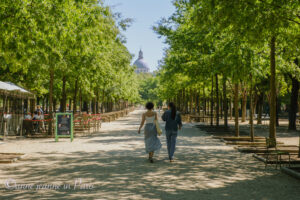WHO AM I ? my BIO
Montmartre, one of the most picturesque (and popular) areas in Paris.
My MONTMARTRE key words :
village, picturesque, touristy, artists, cobblestones, bird’s-eye view, street music, windmills, cafés, Renoir, Susanne Valadon, Maurice Utrillo, Dalida, Amélie (the movie), hill, stairs,
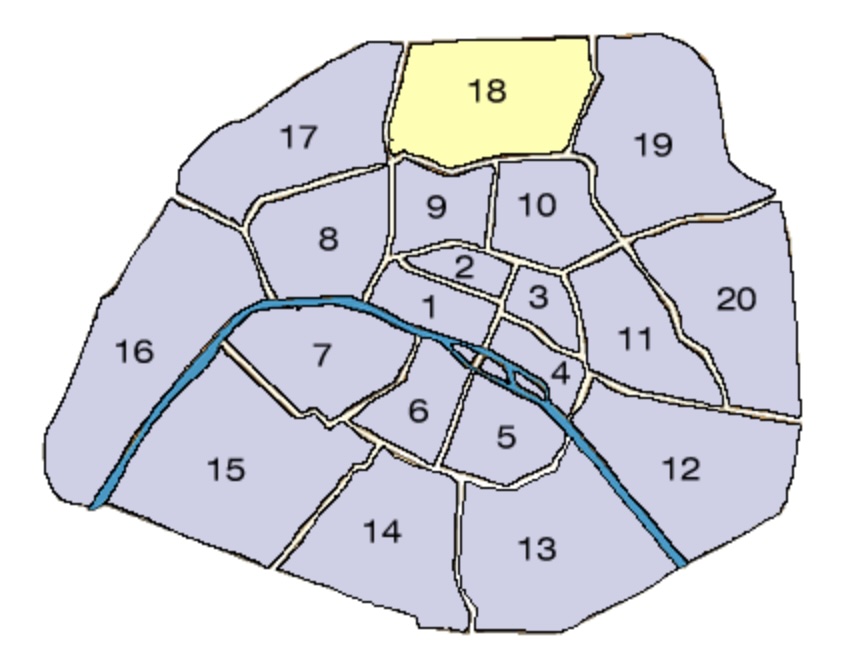
Montmartre is in the North of Paris in the 18th arrondissement
Location
There are 37 stairways in Montmartre. The most famous one (shown in the photo below) has 222 steps.
- Montmartre sits on a hill, known as the “Butte Montmartre”.
- It’s the highest point in Paris (130,53m above sea level).
- At the top stands the white Basilica of the Sacred Heart ( = la Basilique du Sacré Coeur).
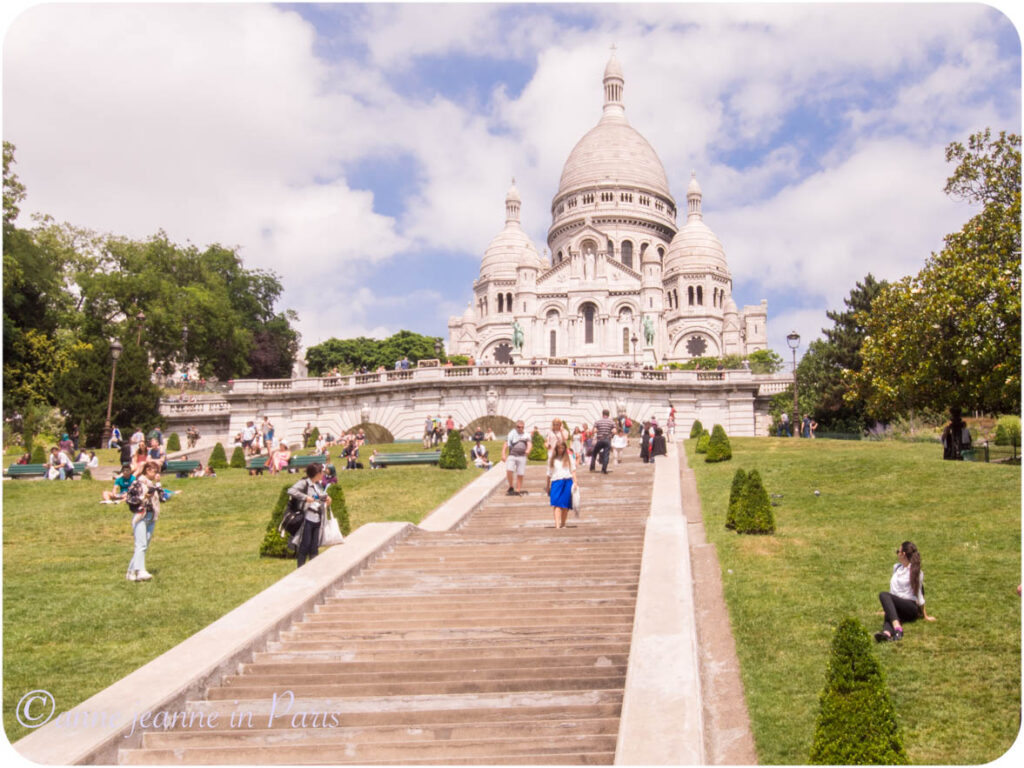
Picturesque and touristy

If you love cobbled streets, cozy cafés, and that timeless village feel, Montmartre is for you.
In Montmartre, you’ll go back in time to the era when Renoir, Toulouse Lautrec and many other artists lived and worked there.
That said, unless you visit early in the morning on a weekday, expect crowds, especially around the Basilica and Place du Tertre ( = the Place of the artists”).
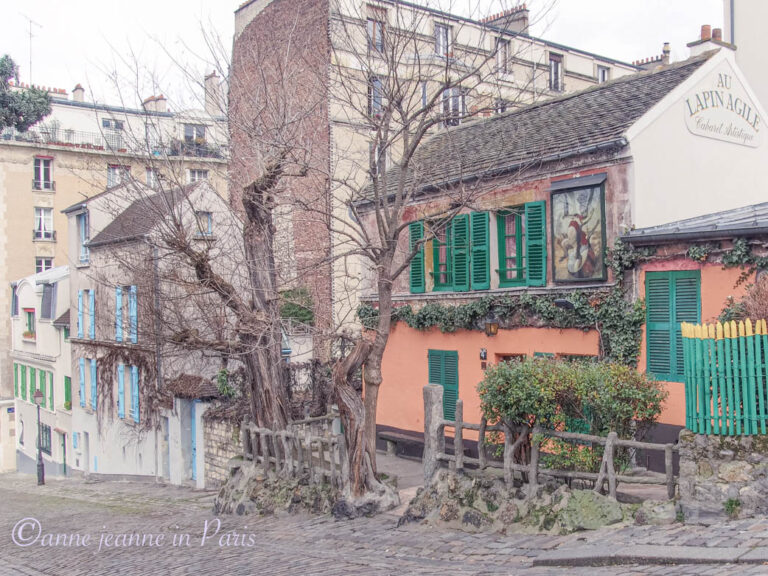
Let’s be honest: Montmartre is the touristy neighborhood in Paris.
So yes, the most iconic spots, like the Sacré Coeur and its esplanade, and the Place du Tertre are often packed…
But good news: walk just a bit away from the hilltop and you’ll discover a quieter, more charming side of Montmartre, full of charm.
From rural hillside to artists' haven.

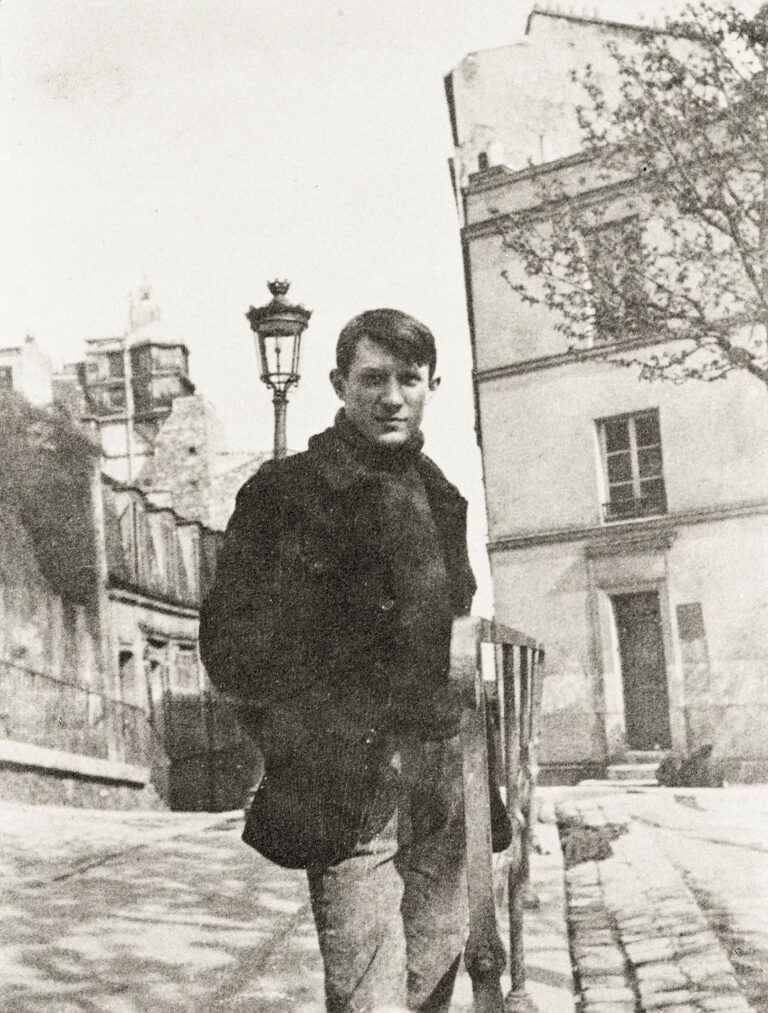
Until 1860, Montmartre was a peaceful village outside the city limits of Paris, dotted with windmills (between 15 and 30 of them!) grinding flour for the capital.
After being annexed to Paris in 1860, Montmartre quickly became a magnet for artists. Painters, musicians, poets… they came to live create, and inspire each other. Renoir, Toulouse Lautrec, Picasso, Braque, Modigliani, Satie, Monet, just to name a few.
Montmartre' during the Belle Epoque
Between 1860 and 1914 (the Belle Epoque), Montmartre became the heart of Paris’ artistic and intellectual life and the model of a free and bohemian existence. These artists formed an artistic community. Most of them were poor, not known yet.
Renoir painted « Le Bal du Moulin de la Galette» here.
Picasso painted “Les demoiselles d’Avignon“.
Toulouse Lautrec created most of his work in Montmartre.
Maurice Utrillo who lived his whole life in Montmartre, painted every corner of it.
During the two years he spent in Montmartre, Van Gogh saw his art changed from rather dark colors to a more colorful and light art
After WWI, most of them moved to Montparnasse chasin a new creative energy.
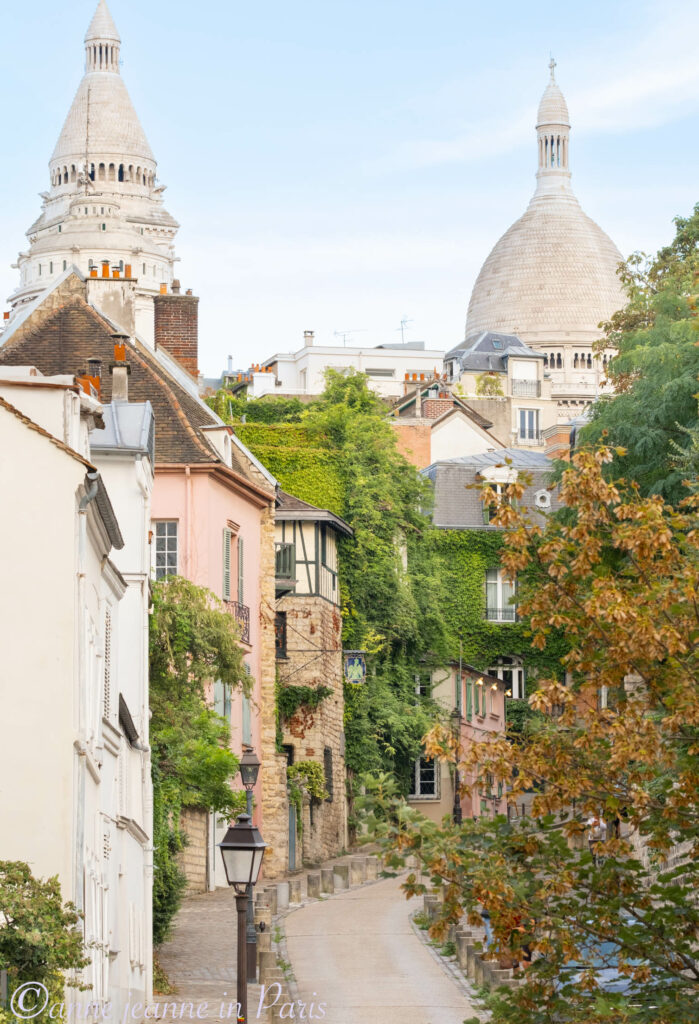

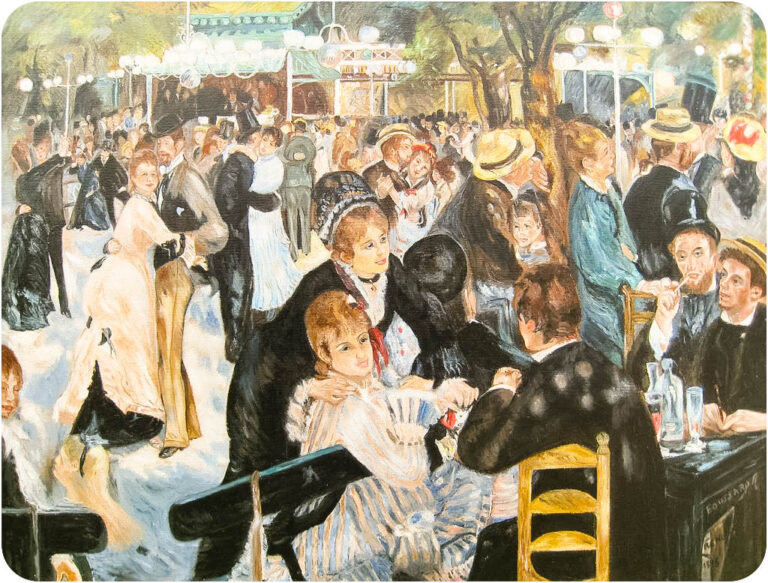
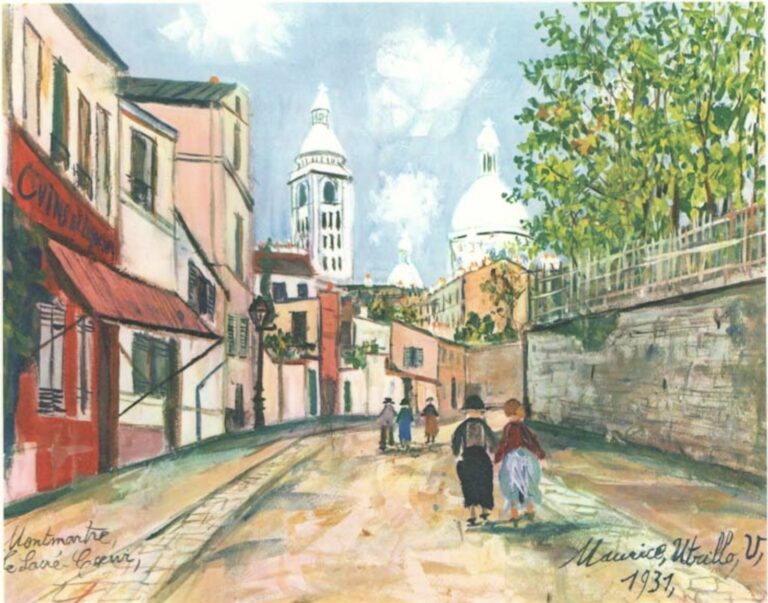
Le Sacré Coeur basilica
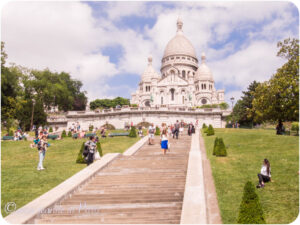
More than just a basilica
Montmartre isn’t just the Basilica and the Place du Tertre. Far from it!
There are so many little gems to discover, hidden streets, colorful houses, quiet squares, and panoramic views.
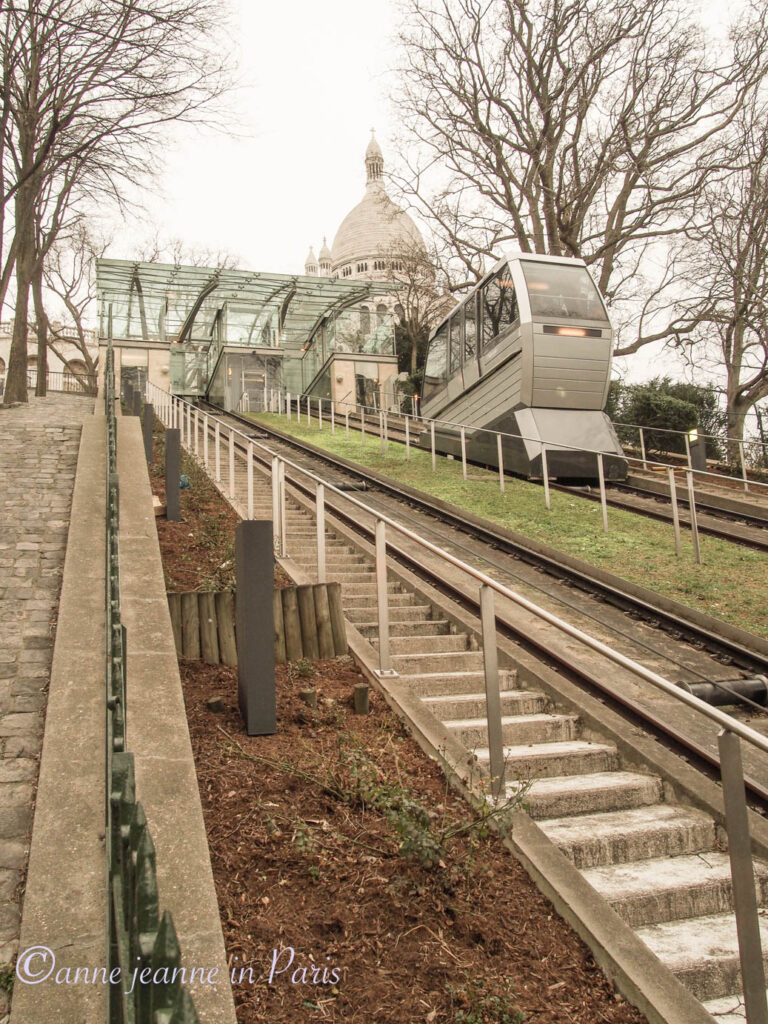
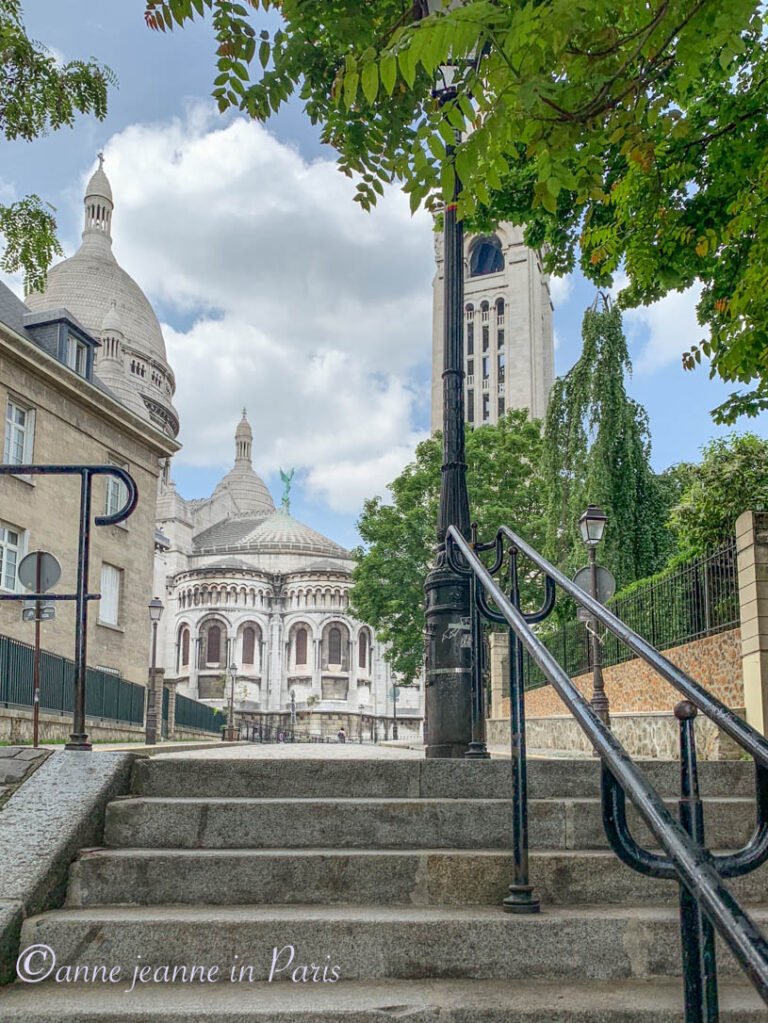
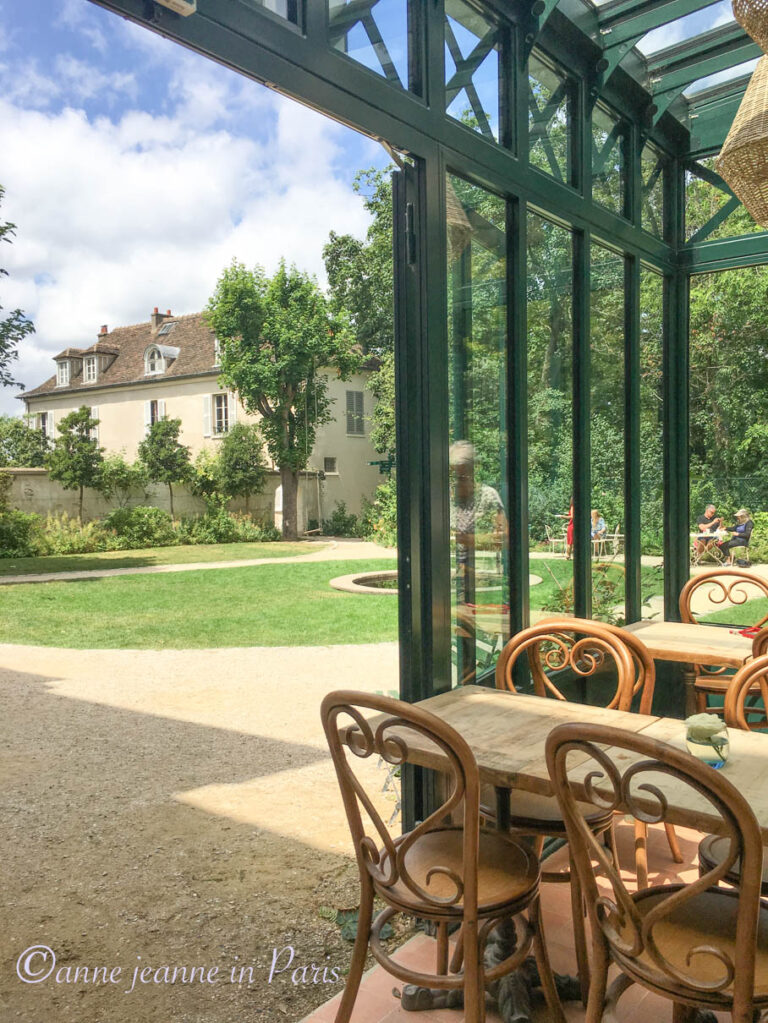
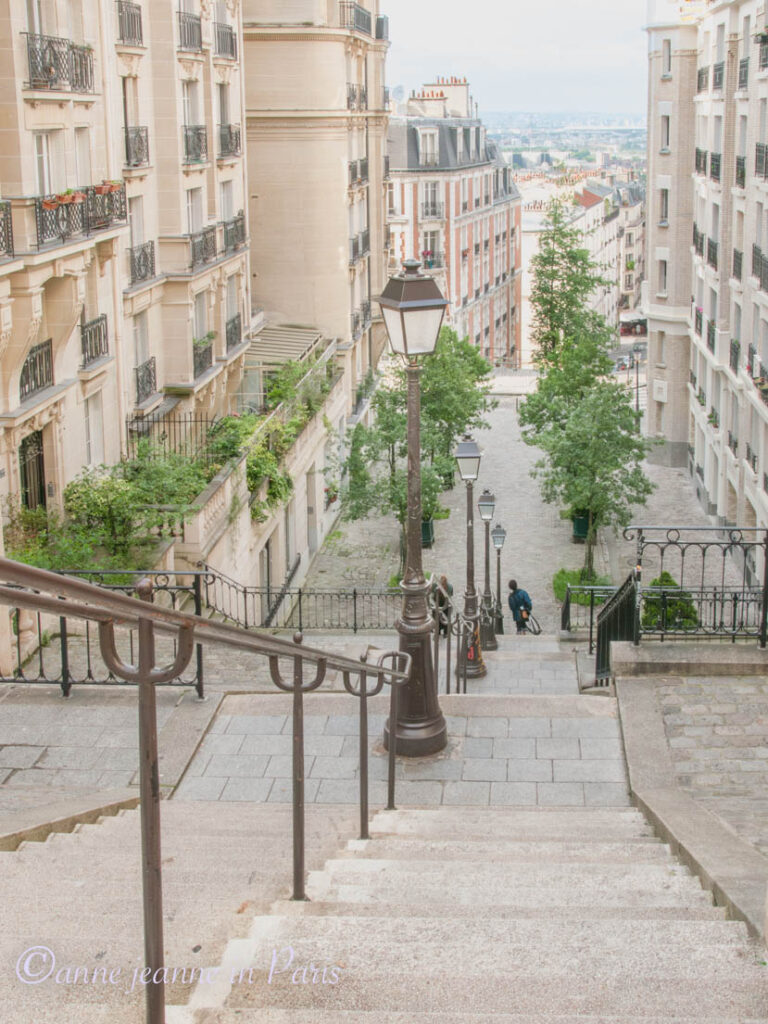
My recommendations:
Watch out for SCAMMERS:
Montmartre has a few spots (mostly the stairs in front of the basilica and the part of the square which is just below the esplanade in front of the Sacré Coeur) where scammers generally hang out.
Usually working in groups of three or four, they’ll ask you to sign a petition. Politely but firly say no and keep walking.
DON’T SIGN ANYTHING, they’ll likely ask you for money afterward and won’t leave you alone.
This is the only type of scam I came across in this area.
But I’ve heard people mentioning other scams :
- Someone “finding” a gold ring on the ground and offering to sell it to you.
- Someone tying a bracelet around your wrist and demanding payment.
IN ALL CASES, JUST SAY NO AND KEEP WALKING.

A portrait Place du Tertre (= Place des Artistes):
Having your portrait of silhouette done can make for a fun memory.
But watch the prices, some are quite high. Don’t hesitate to ask around and compare offers. And feel free to say no if the price seems off, even if they insist…
Stay a while
If you can, spend more than one hour in Montmartre. Beyond the main attractions, you’ll find beautiful spots like rue de l’Abreuvoir, Rue des Abbesses, and La Maison Rose.
Eat elsewhere
I’d recommend skipping lunch or dinner at Place du Tertre. it’s scenic but too touristy to make sure to get a quality meal… However, having a drink on the square ? Why not, it’s part of the experience !
When to go
Try to visit in the morning and on a weekday. By late morning, especially in high season, the top of the hill gets very crowded.
Getting to the top of the hill
There are MANY WAYS TO reach THE TOP of Montmartre hill:
- Climb one of the 37 staircases located around Montmartre hill (some stairways are much shorter than others). The most famous and touristic stairway is the one facing the Basilica (222 steps). But others stairways are quieter and just as charming.
- Take the funicular. Same price as the Paris’ Métro. From Anvers station, walk up Rue Steinkerque (not the prettiest street, lined with souverni shops…), and hop on the funicular
- Take the Bus 40 from nearby Metro Pigalle. It drops you off near the top.
- Details : for more info, check the RATP (Paris metro/bus system) website.
Some spots to check out
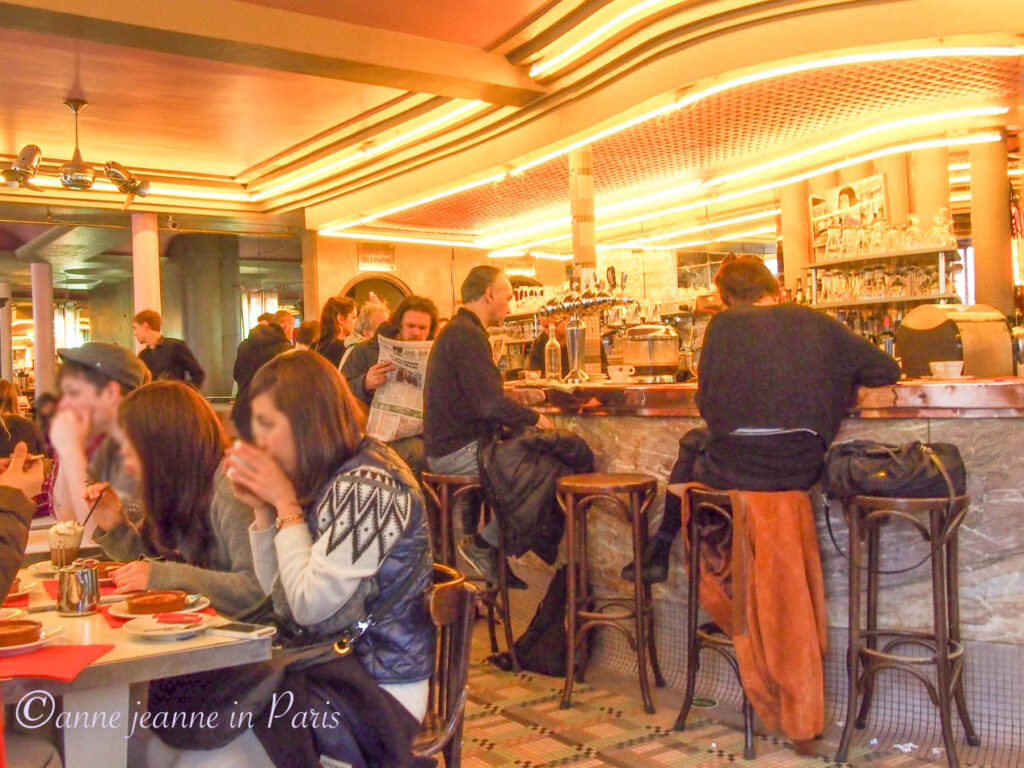
- Le café des 2 moulins, 15 rue Lepic. A must-see for fans of the movie Amélie. If you loved the film “Amélie” (about 200 meters from the métro Blanche). Expect more tourists than locals, but still worth a peek for a drink.
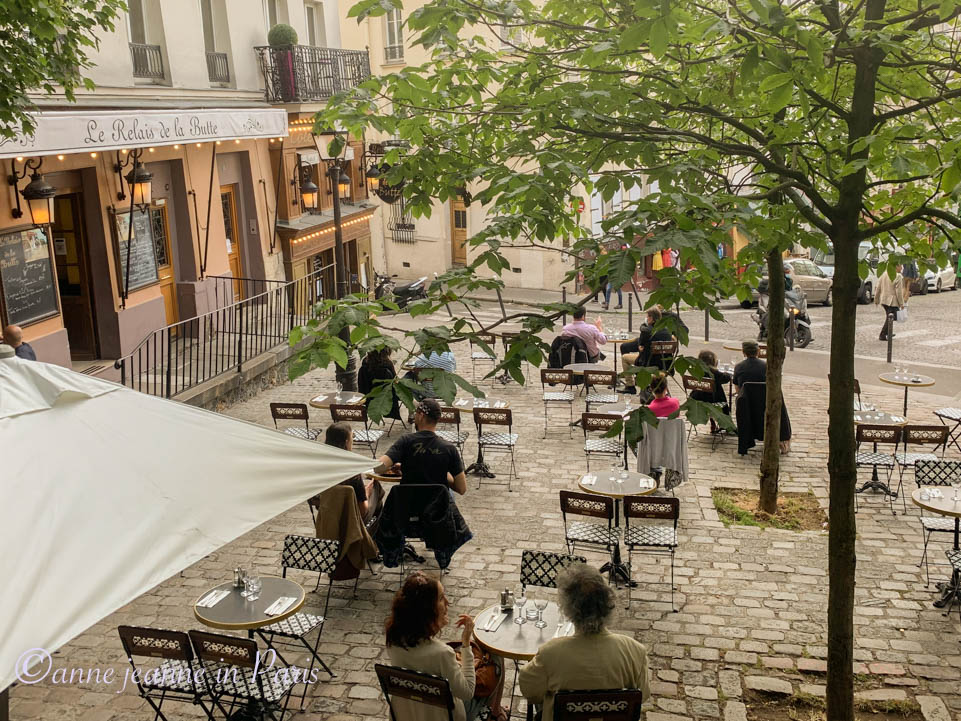
- Le Relais de la Butte, Place Emile Goudeau. A nice terrace with local vibes, just steps from the legendary Bateau-Lavoir artist’s studio. One of my favorite spots.
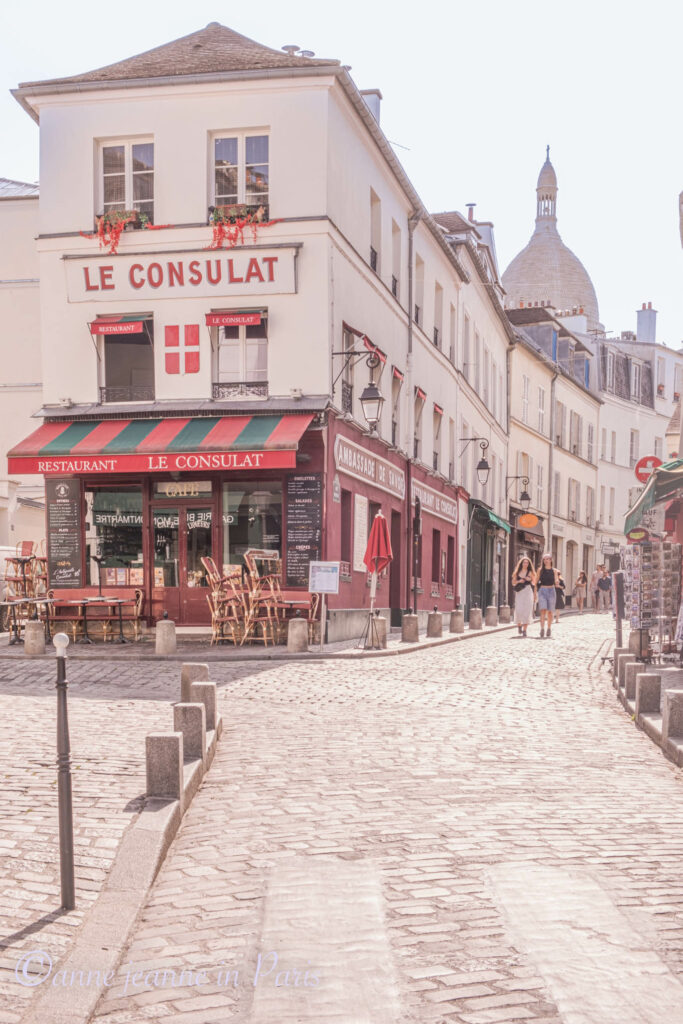
- Le Consulat, rue Norvins . A classic Montmartre café, a short walk from Place du Tertre.
- La Maison Rose : rue de l’Abreuvoir. Iconic and photogenic.
- Le Lapin Agile: 22 rue des Saules. Historic cabaret with strong artistic roots.
- Le Moulin Rouge: Technically, not a real windmill, but definitely one of the most famous cabarets in the world. Expensive, touristy…but maybe worth it for the experience. Near Metro Blanche.
- Dalida’s house: Rue d’Orchampt. If you’re a fan of the French singer Dalida , this is where she lived for many years. There is a plaque outside. (Can’t be visited).
How to go to Montmartre by Metro
- Abbesses (line 12): located on a charming square with cafés. Take the elevator unless you want to climb the deepest metro stairs in Paris… they feel endless!
- Anvers (line 12): The most common stop for tourists. From here, you’ll have a direct view of the Basilica and access to the stairs or funicular. Just not e that Rue Steinkerque, the short street to get there, is lined with souvenirs shops. Many visitors seem to love it, but it’s not my favorite.
- Lamarck-Caulaincourt (line 12): A quieter option on the north side of the hill. Fewer tourists and fewer steps to reach the top.
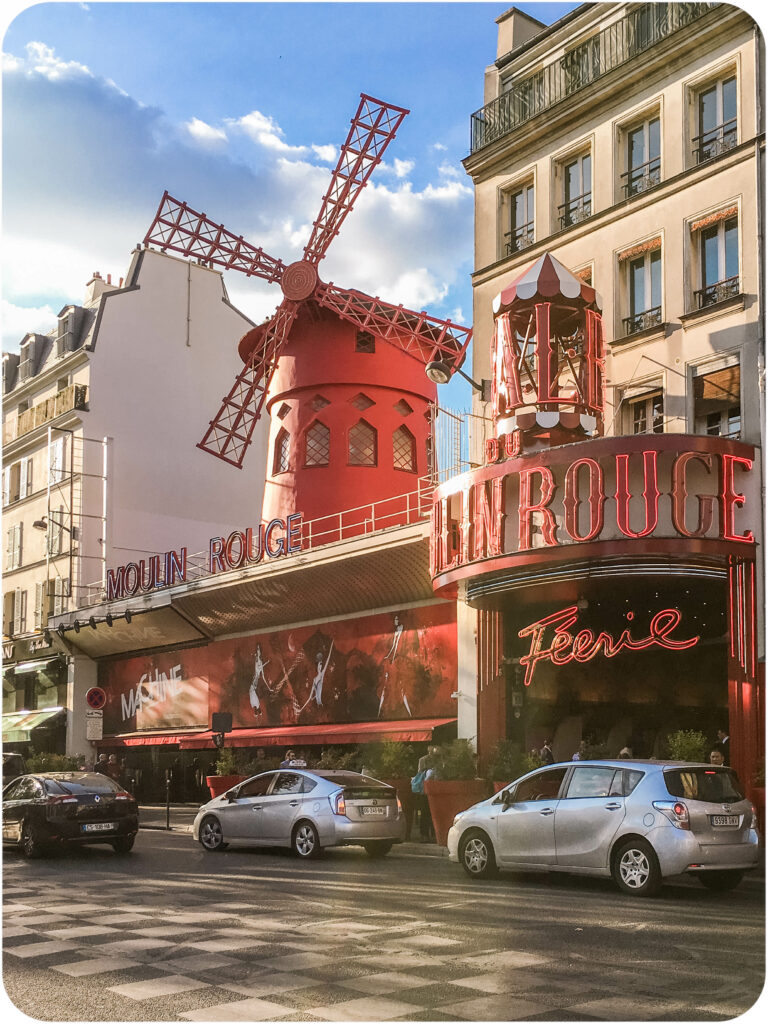
WHO AM I ? my BIO
Discover my SERVICES
My article: “I am not a tour guide I am Parisian (lol)“
More about me? :



